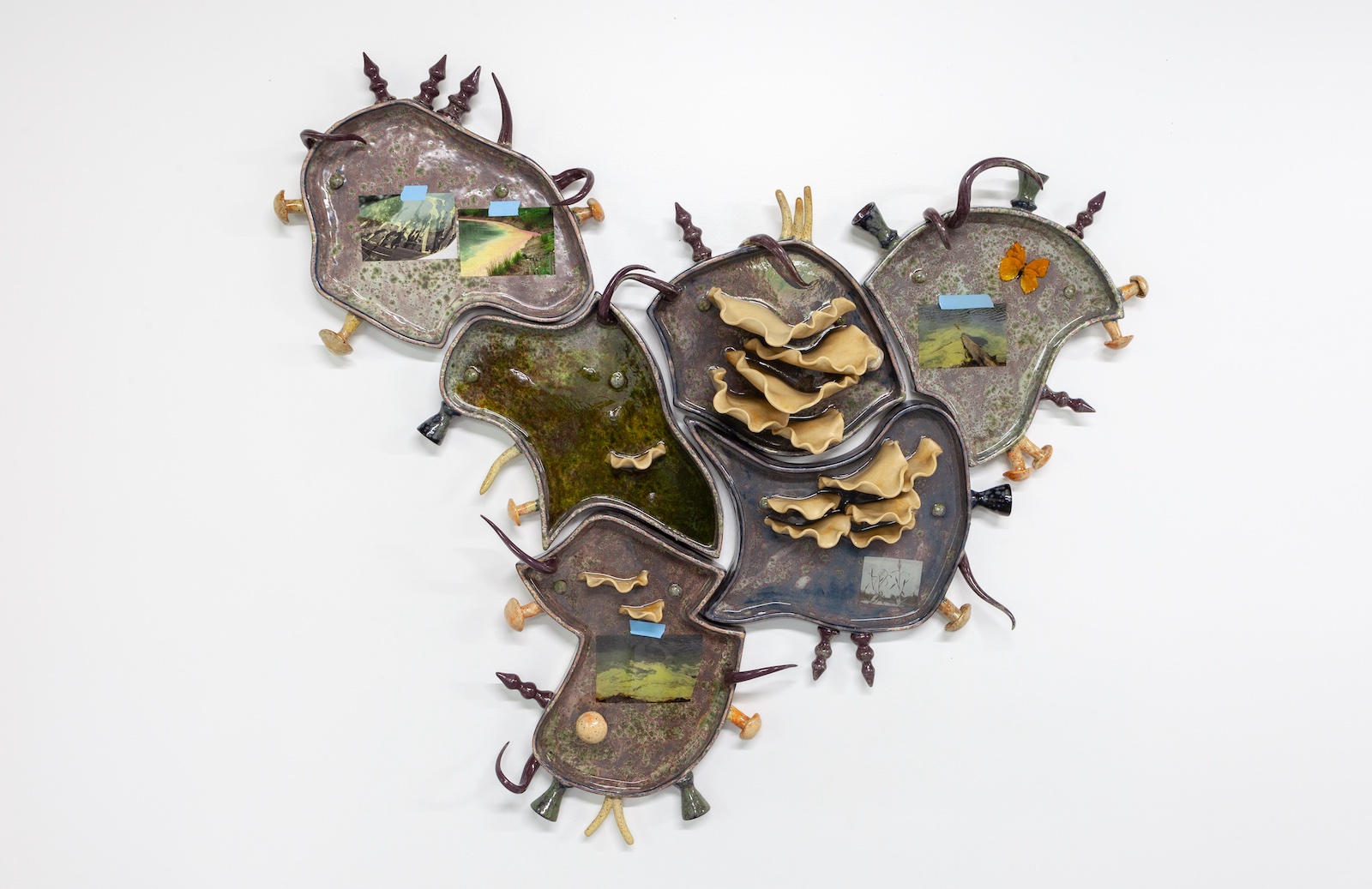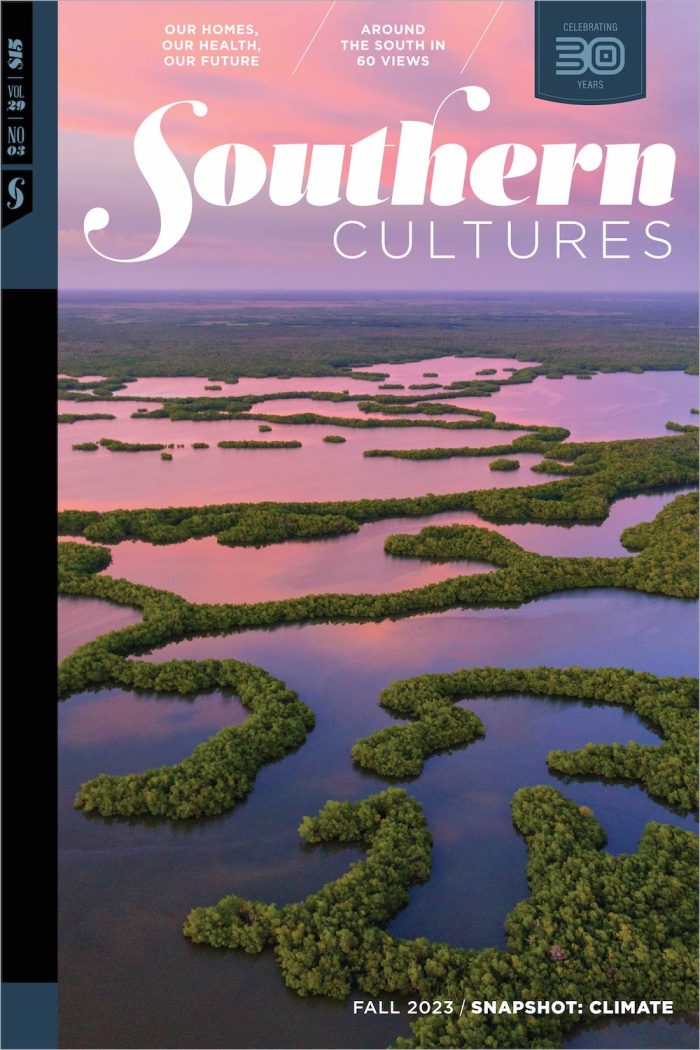Climate change is rapidly transforming our world in ways both visible and invisible. Greenhouse gas pollution—invisible to the human eye—is causing climate change, with widespread impacts to which we now bear witness. Rising temperatures have caused the loss of more than 28 trillion tons of Earth’s ice between 1994 and 2017, roughly the volume of water in Lake Superior, and triggered oceanic thermal expansion, accelerating sea level rise. Changing precipitation patterns have caused and exacerbated extreme droughts and flooding in many of the world’s regions, leading to an increase in food insecurity, hunger, and famine. Record-breaking heat waves have wracked cities across the globe, subjecting 125 million people to more frequent, prolonged, and intense heat. And these are just some of climate change’s more visible effects. There are other mounting shocks that remain mostly unseen, yet portend pernicious, irreversible outcomes. Ocean acidification and its destruction of marine ecosystems, as well as the loss of species and their habitats, and the displacement of people due to depletion of natural resources like fresh water are examples of the many compounding catastrophes caused by climate change.1

Making the invisible visible is at the core of this issue of Southern Cultures: using images and words from the contemporary South to show the ubiquity of climate change and how we all are experiencing the phenomenon. Whenever we pick up a newspaper, browse a news site, or scroll through social media, we see many stories reflecting the mark of a warming climate. Events that were once considered rare, with a 1 percent chance of occurring within a given year, known as “one in one hundred” events, are no longer deemed extreme, since they are happening more regularly in places near and far. Climate change is shifting our baselines so that the world our children will inherit will not resemble the one this generation was born into. Brooke White’s project documenting water levels rising from her daughter’s ankles to shoulders as she grows from ages three to nine is a visceral representation of the physical changes due to global warming we have already experienced in our lifetimes.
Born and raised in the American South, the child of Taiwanese immigrants, in a decade when an understanding of climate change and its causes was just becoming mainstream, I have always lived in a liminal space, an in-between place and time. Somewhat fittingly, I have formed my career researching the environment—built and natural, physical and biological—at the interface of climate science and policy. After my first year of college, I spent a formative summer studying insect-plant interactions in the lowland rainforests of Costa Rica. I will never forget the awe-inspiring biodiversity and the deep, guttural rumblings of howler monkeys waking me up at dawn. When I returned to campus the following fall, I realized that whatever scientific discovery I had made that summer would not matter much if the rainforest no longer existed. And so, I paired my studies of biological sciences with an academic pursuit in political sciences, giving me a better understanding of the role of institutions and public policy in addressing environmental issues, including the overarching problem of our age: climate change. Although I no longer tramp through the rainforest in search of samples for scientific experimentation, I remind myself and my students daily of the importance of scientific inquiry in the pursuit of policy solutions. There is still so much to learn about the physical world, many questions to pose about human civilization’s development paths, and actions to propose that would reduce our contributions to climate change and mitigate its worst effects.
Climate change’s sheer complexity is why global governance scholars have deemed it a “superwicked” problem. As the name suggests, superwicked problems cannot be solved with a simple or straightforward policy response. Four key features make climate change especially tricky to address: (1) time is running out, and waiting longer worsens the impacts, increasing damages and costs; (2) those who seek to solve the problem are also causing it; (3) no central authority owns the problem, creating incentives to “free-ride” and overuse global commons resources, like the atmosphere; and (4) we humans have a tendency to hyperbolically discount the future, focusing instead on short-term horizons. These factors help explain why humans are inclined to overlook the overwhelming evidence of climate change—even when it arrives in our backyards and communities.1

Time is running out. The latest climate science, as synthesized by the Intergovernmental Panel on Climate Change (IPCC), describes in stark detail a narrowing window for meaningful climate action. Since the IPCC released its first report in 1990, its conclusions have become sharper and more dire. The synthesis of the Sixth Assessment Report, released in early spring 2023, declared that humans “have unequivocally caused global warming, with global surface temperature reaching 1.1°C above 1850–1900 in 2011–2020.” Scientists are not prone to decisive statements, and to have thousands of them, representing more than one hundred countries, agree to this declaration as its number one headline, is extraordinarily powerful. The task confronting us grows more urgent by the day if we are to stave off climate change’s most pernicious effects. By midcentury, global emissions must fall to “net-zero” (meaning the amount of climate-warming pollution we emit must be balanced by an equivalent amount we remove by natural or other means), and even if we were to accomplish this monumental feat, we would have only a two in three chance of containing global temperature rise within 1.5 degrees Celsius—the threshold beyond which scientists believe climate impacts will be widespread and irreversible.3
Even with cold, hard science unambiguously staring us in the face, people are prone to optimism bias, and individuals believe that they are, for one, less likely than others to experience the devastating impacts of climate change. Combined with irrational discounting—the preference for immediate enjoyment—this idealism explains our collective resistance to immediate action. And as superwicked problems go, the longer we wait, the more daunting the task ahead. An oft-cited analogy that illustrates the enormity of the climate challenge equates the necessary emissions reductions to falling off a cliff. If the world had begun steadily decreasing emissions a decade ago, a modest 2 percent annual reduction would have been sufficient. But since emissions have only climbed, despite a brief 6 percent dip in 2020 due to the COVID-19 pandemic when stay-at-home measures reduced transport-related emissions, global emissions now need to fall off a cliff—decreasing by more than 7 percent a year. The long-term temperature impacts of climate-warming emissions are cumulative, which means that we must reduce emissions at an even faster rate than was previously estimated. In the words of the scientists who authored the United Nations’ annual Emissions Gap Report, we now have “four times the work or one-third the time” to contain dangerous global temperature rise.4
The reality is that the current pace of reduction and the ambition of national government climate policy efforts are woefully inadequate to stay within our remaining carbon budget, which, at the end of 2022, hovered around 380 gigatons of carbon dioxide. At the current rate of climate emissions, this entire budget—how much carbon the atmosphere can withstand before global average temperatures exceed 1.5 degrees Celsius—will be spent within the next nine years. Accounting for all of the efforts national governments have thus far put forward to tackle climate change, there remains a massive gap of 23 gigaton carbon dioxide–equivalent between what we are on track to emit into the atmosphere and the pollution levels that would keep us within reach of the 1.5 degrees Celsius goal. To help visualize this quantity, one metric ton of carbon dioxide is about the weight of a small car, so this gap is equivalent to about 23 billion small cars. This “emissions gap” has widened by four times since 2010, yet has remained virtually the same for the last several years, since before the COVID-19 pandemic. Translated into global temperature rise, scientists estimate that the world is on track to warm by almost 3 degrees Celsius by the end of the century, a scenario that would forever change the Earth and its suitability for human civilization as we know it.5

 Lying in the Still Waters of Erasure, 2023, Erin Jane Nelson. Pigment prints, sequins, copper, embroidered trim, and bio-based resin on glazed stoneware. 44 x 34 x 4 in. Courtesy of the artist.
Lying in the Still Waters of Erasure, 2023, Erin Jane Nelson. Pigment prints, sequins, copper, embroidered trim, and bio-based resin on glazed stoneware. 44 x 34 x 4 in. Courtesy of the artist.We could try to point fingers, but the reality of climate change’s superwicked nature is that we lack a central authority needed to resolve entrenched disputes about who should do what and by when. Having attended the last thirteen of the twenty-seven annual climate negotiations, I’ve witnessed the déjà vu of entrenched positions along lines of economic development and the reality that climate impacts are also grossly unequal. Those who have historically caused the problem are asking the countries suffering the most from these consequences to pursue different paths of development simply because, from a climate perspective, we all have to change yet lack the political desire to do so. The most recent of these talks (COP-27) was in Sharm El-Sheik, Egypt, which focused discussions on “loss and damage,” the idea that developing countries deserve compensation for the adverse effects of climate change caused by industrialized countries. Although agreement on a “loss and damage” fund was considered a monumental achievement of the COP-27 summit, it is clear from many of the snapshots in this issue that the costs of climate change extend beyond economic or monetary loss. Infrastructure can be rebuilt, but the human costs—physical, mental, and emotional—are more difficult to recover.
Where to look for hope? I’ve spent the last seven years researching alternative policy solutions to climate change. Scholars of global environmental governance, like myself, are observing a groundswell of city, regional, and private sector actors that are stepping up to fill the gap left by derelict national governments. In the lead-up to the 2015 Paris climate negotiations, then–UN Secretary-General Ban Ki-moon ushered an “all hands on deck” approach and made a concerted effort to champion and galvanize thousands of these entities, some acting alone and others in coalitions to transition to renewable energy, halt deforestation, and implement other strategies to reduce emissions and adapt to the impacts of climate change. Cities, states, regional actors, and private companies have responded in spades. Voluntary networks have emerged in the form of transnational climate governance initiatives, like C40 Cities for Climate Change Leadership and the CDP (formerly known as the Carbon Disclosure Project). These coalitions connect cities, companies, and other actors to share knowledge, build capacity, disclose carbon emissions information, and pursue other goals across national borders. Rather than a simple hub-and-spoke model of nation state–centric governance, global climate governance is increasingly characterized as a diverse ecosystem of actors, with multiple nodes interacting simultaneously.
It is too early to tell whether this new “polycentric” approach to climate governance is the antidote we are looking for, yet examining how individuals, private businesses, financial institutions, and local governments can contribute to climate action provides some hope and a sense of agency. It is organizations like Marquetta Dickens’s Freedom Org, featured in this issue, that bring attention to the disparate impacts of climate change, which disproportionately affect the poor and people of color in the United States, and why climate solutions have to be enacted locally. My contributions to the IPCC‘s Working Group III report on climate change mitigation unpack the known and unknown regarding these private and local solutions to curb climate change. We know that these entities are critical to the fight against climate change and are delivering some real, meaningful reductions beyond what national governments are pledging, but it’s only a start. Global policy discussions, recognizing that this new model of multilevel, multiactor climate action is here to stay, have now shifted to questions of how to make all actors, at every level and including national governments, accountable for what they’ve pledged. Young people, in particular, have been the most vocal about the need for accountability and delivery on promises.6
The time we have left to reverse course on climate is rapidly shortening. Despite the science, and policymakers’ attempts to negotiate a solution, we haven’t yet turned a corner on climate change. The irony, as the IPCC spells out, is that we have available all the solutions we need to reduce emissions today—renewable energy, electric vehicles, plant-based diets, urban density, and public transit, to name a few. But what we are lacking in the handling of the superwickedness of climate change is the requisite inspiration and will. I hope that this issue of Southern Cultures inspires you to see climate change differently, and urgently.
This essay appears in the Snapshot: Climate issue (vol. 29, no. 3: Fall 2023).
Angel Hsu is assistant professor of public policy and environment at the University of North Carolina at Chapel Hill. She is the founding director of the Data-Driven EnviroPolicy Lab, an interdisciplinary research group that innovates and applies quantitative approaches to pressing environmental issues. She was a contributing author to the IPCC Sixth Assessment Report—Working Group III and was a lead author of the 2018 UNEP Emissions Gap Report special chapter on nonstate and subnational actors. She holds a PhD in environmental policy from Yale University.
Erin Jane Nelson is an Atlanta-based artist and writer. She is a 2023 Guggenheim Fellow in Fine Arts and was a recipient of the 2020 Rabkin Prize in arts journalism. Her work has been exhibited throughout the US and abroad and was included in the 2021 New Museum Triennial, “Soft Water Hard Stone,” and in “Making Knowing: Craft in Art 1950–2019” at the Whitney Museum of American Art. Previously, she served as the Executive and Artistic Director of Burnaway from 2018 to 2021.


